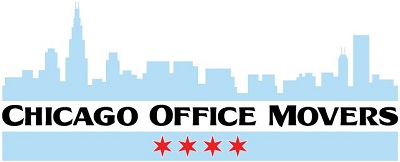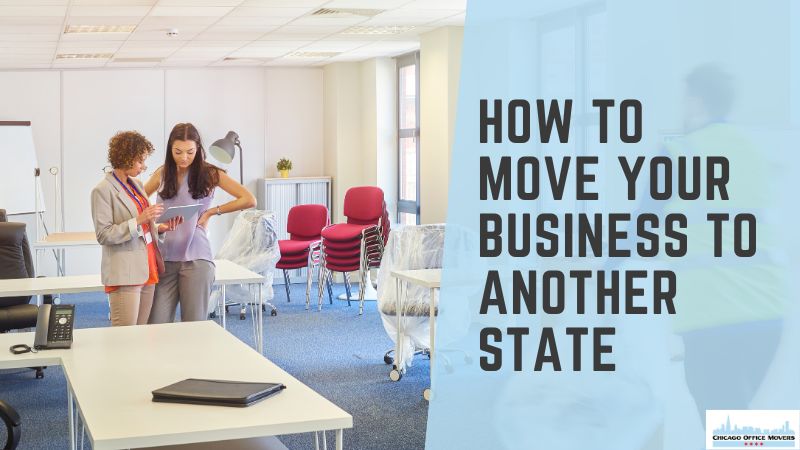
10 Hidden Costs of Moving Your Business and How to Avoid Them
10 Hidden Costs of Moving Your Business and How to Avoid Them
Written by Kari-Ann on . Posted in Corporate Relocation, Office Moving
Running a business means juggling dozens of costs every day. Rent, salaries, marketing—these are the obvious ones. But what about the expenses that quietly slip under your radar? The ones that slowly chip away at profits without anyone noticing? For small businesses and startups, these hidden costs can make a real difference. Things like employee turnover, outdated equipment, rising utility bills, or compliance oversights can quietly drain resources and hurt your bottom line more than you think.
In this guide, we will uncover the hidden costs that most businesses overlook, and provide practical strategies to manage them.
1. Employee Downtime
Every hour your staff isn’t working during a move can result in lost revenue. According to the U.S. Bureau of Labor Statistics, the average office worker generates roughly $40–$50 per hour in economic output. Multiply that by a team of 20 or 50 employees, and even a single day of unplanned downtime can cost thousands of dollars.
How you can avoid this? Plan your move in phases to minimize disruption. Set up temporary workstations or allow flexible remote work where possible. Coordinate with your IT and operations teams so critical systems are ready before employees return to full capacity. Even small adjustments, like staggering departments’ move-in schedules, can protect productivity and maintain revenue flow.
2. IT and Technology Setup
Moving servers, computers, and telecommunications systems isn’t just physical labor. Mismanaged IT relocations can lead to data loss, equipment damage, and delays. Research shows that technology downtime can cost businesses 2–5% of annual revenue during a transition.
How to Manage IT Transition?
Involve your IT team early in the planning. Conduct a full inventory of all hardware and software, back up all data, and pre-configure systems in the new office when possible. Consider temporary cloud solutions or virtual desktop setups to keep employees connected. A carefully orchestrated IT plan prevents frustration and ensures work can continue seamlessly.
3. Temporary Storage
Sometimes the new office isn’t ready for all equipment or furniture. Temporary storage might seem minor, but over a few weeks, fees can add up. IBISWorld reports that short-term storage can easily account for 5–10% of a moving budget.
Prioritize moving only essential items first and ensure storage is used efficiently. Label and track items carefully, so nothing gets misplaced. Coordinating your move-in with the completion of office renovations or installations helps reduce storage time and avoids unnecessary costs.
4. Office Decommissioning and Cleaning
Leaving your old office space in poor condition can result in security deposit disputes or extra charges. Cleaning, minor repairs, and professional services may all be required to meet landlord expectations.
Inspect your current office thoroughly before moving day. Document the condition with photos, schedule necessary repairs, and plan cleaning services in advance. This proactive approach protects deposits, avoids disputes, and ensures a smooth handover.
5. Permits, Access Fees, and Logistics
Moving into urban buildings often involves elevator reservations, loading dock scheduling, parking permits, and other logistical hurdles. Without proper planning, these small fees can add hundreds or even thousands of dollars to your budget.
Communicate early with building management to confirm all regulations and associated costs. Reserve elevators, loading areas, or parking spots ahead of time. A detailed logistics plan ensures the moving crew can operate efficiently without encountering costly last-minute restrictions.
6. Employee Relocation and Travel Costs
If staff must temporarily relocate or travel for the move, expenses for relocation allowances, temporary housing, and travel can be significant. Even a single week of hotel stays for a small team can exceed $5,000.
Be transparent with employees about relocation policies. Provide guidance and support, such as temporary accommodations or flexible work arrangements. For some teams, hybrid schedules or remote work during the transition can reduce both costs and employee stress.
You can also follow our guide on how to prepare your employees for an office relocation to make the transition smoother.
7. Utility Activation and Office Setup
New office locations often require deposits or setup fees for electricity, internet, phone lines, and HVAC systems. Overlooking these steps can result in delays or unplanned charges, which can disrupt your business operations.
Schedule all service activations well ahead of the move. Confirm account details, arrange installation times, and test systems before employees return. Ensuring these basics are in place avoids frustration and prevents downtime.
8. Insurance Adjustments
Your current insurance may not cover losses during a corporate move, especially for high-value equipment or temporary storage.
Consult your provider before moving. Confirm which risks are covered, and consider supplemental policies if needed. A proactive review ensures your assets are protected throughout the transition and reduces financial exposure.
9. Furniture and Equipment Replacement
Not all furniture or technology fits the new office layout. Adjustments, renovations, or outright replacements can create unplanned costs. IBISWorld estimates that 3–7% of moving budgets can go to unexpected equipment or furniture replacements.
Take accurate measurements of your new space and audit current furniture and technology. Identify which items can be reused, refurbished, or rearranged. By planning the office layout ahead of time, you can avoid last-minute purchases and keep your move on budget.
10. Updating Branding and Communication
Changing addresses affects everything from your website and email signatures to signage, stationery, and legal registrations. Neglecting these updates can disrupt communication and affect your brand image.
Create a comprehensive checklist of all materials and channels that need updating. Assign responsibility to specific team members and start early to ensure your brand and contact information are accurate from day one.
It’s also essential to properly handle sensitive documents during a move to maintain confidentiality and ensure smooth operations
Simplify Your Office Move and Decommissioning with Experts You Can Trust
A corporate move comes with many hidden costs, but with careful planning, these can be minimized or avoided. Hiring experienced movers who understand corporate relocation can save time, money, and headaches.
Chicago Office Movers specializes in moving businesses of all sizes and industries. Our team handles everything from planning to packing to setup, ensuring your relocation is smooth and stress-free. Whether you run a small office or a large corporate facility, we make sure your move is efficient and your business stays on track.
We also handle office decommissioning, including cleaning, minor repairs, and organizing the handover of your old space, so you don’t have to worry about a thing.
No matter the size of your business or the complexity of your move, we make sure your operations stay on track and your team can focus on what matters most. Call Chicago Office Movers today at 312-244-2246 and let us take care of your office move and decommissioning from start to finish.
Frequently Asked Questions
How do you budget for unexpected expenses during a move?
A good rule of thumb is to allocate 10–15% of your overall moving budget for unanticipated costs. Track your spending carefully and update your plan weekly leading up to the move to avoid surprises.
Are there tools or software to help track hidden moving costs?
Yes. Accounting software like QuickBooks or Xero can help track expenses, while project management tools such as Asana or Trello can manage timelines and tasks. Energy monitoring systems or IT tracking tools can also identify areas where hidden costs may occur.
Do insurance policies cover business moves?
Not always. Standard business insurance may not cover losses during transit or temporary storage. Check with your provider and consider supplemental coverage for sensitive equipment, inventory, or critical documents.
Can temporary workspace solutions be cost-effective?
Sometimes renting coworking spaces or temporary offices is cheaper than delaying operations. Consider this option if your new office isn’t fully ready for move-in.
Contact Us
Related Services
- Corporate Moving
- Commercial Moving
- Reliable Commercial Storage
- Specialty Commercial Moving
- Furniture Assembly
- Movers for Office Renovation
- Machinery Moving
- Library Moving
- Lab Moving
- Server Room Moving
- Office Movers in Rosemont, IL
- Commercial Moving in Bolingbrook, IL
- Commercial Movers in Naperville, IL
- Commercial Movers in Des Plaines, IL
- Commercial Moving Services in Aurora, IL
- Schaumburg Office Movers
- Commercial Moving Services in Oakbrook, IL
- Commercial Movers in The North Shore
- Commercial & Office Moving Services Deerfield, IL
- Commercial & Office Movers in Hinsdale, IL
- Elk Grove Village Commercial Movers
- Furniture, Fixtures and Equipment Services
- Moving Company in Lincolnshire, IL
- Professional Movers in Downers Grove, IL
- Moving Company in Chicago, IL

Director of Marketing & Development
Office: (847) 621-5176
Cell: (312) 497-3203
At Chicago Office Movers, Kari-Ann is our Director of Marketing & Development. As the master of visibility, she is responsible for all things Branding and Marketing related. Kari-Ann comes to us with experiences in Marketing for a multi-brand and multi-location company, the service industry, non profit marketing event planning and fundraising, and retail management. She is the Chair of the Board for the Schaumburg Business Association 2021 & 2022, a member of the Elk Grove Village Chamber Board of Directors, and past chair and top fundraiser for the Northwest Suburban Walk To End Alzheimer’s.
Kari-Ann received her Bachelor of Business Administration in Marketing from Western Michigan University. She is Master Certified in Constant Contact Email Marketing and has held numerous social media training classes.
















